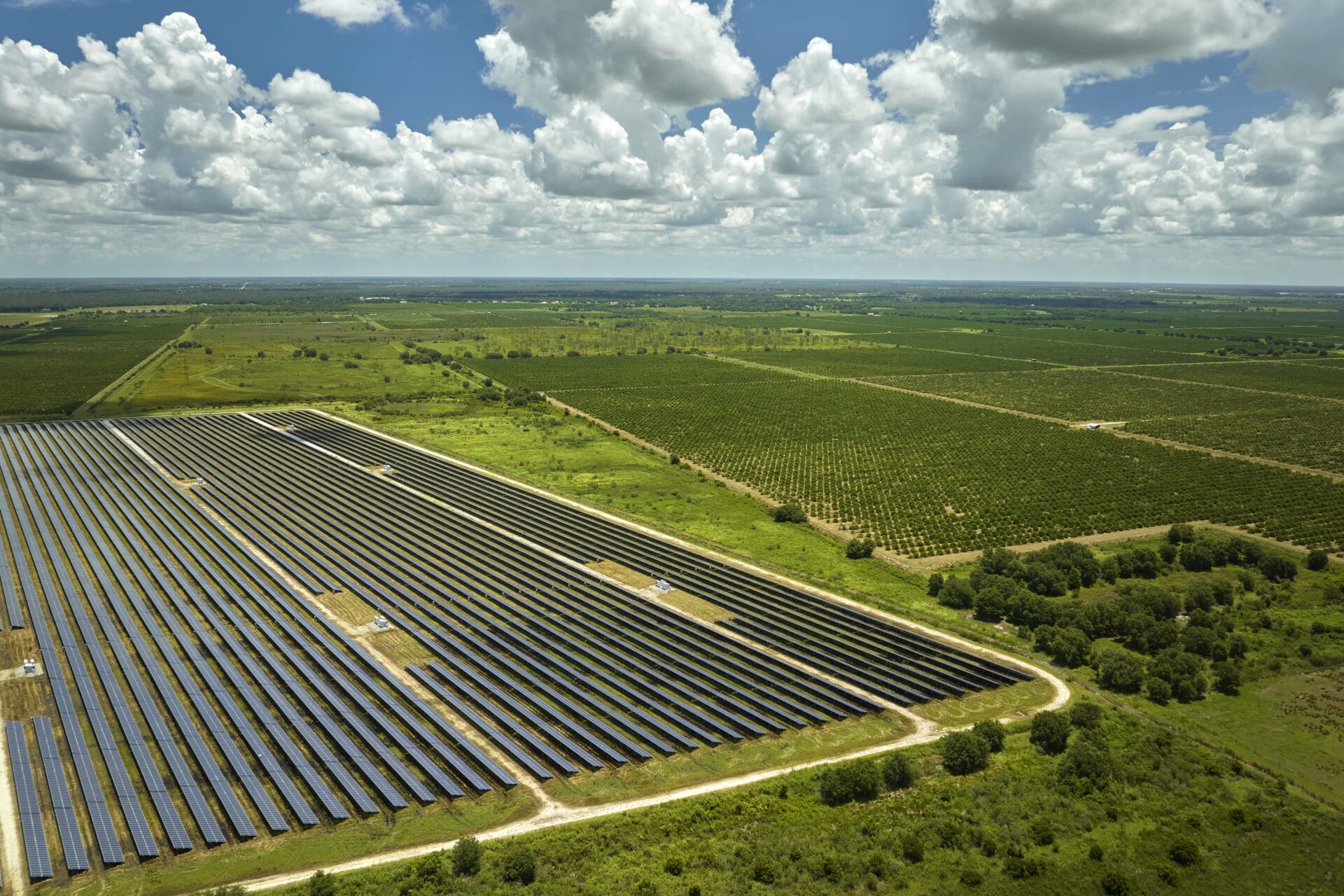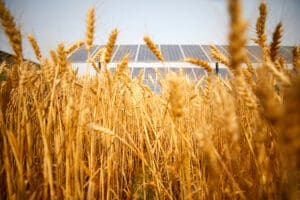
For many people in rural communities, a utility-scale solar farm can feel like a big change to what they love most: open country views, peaceful surroundings, and the unique character of their town. Compared to more intensive forms of development — like housing communities, data centers or distribution centers — solar farms help protect the open, quiet landscape people love, and keep the land usable as farmland into the future.
In particular, one of the first concerns from nearby homeowners is: “Will this lower my property value?” This fear often comes from stories heard secondhand. But the truth is, most studies have found that solar projects have no negative impact on neighboring property values. In some cases, they’ve been shown to slightly increase value. Here, we’ll take a closer look at the data.
What Factors Most Often Affect Home Values
Before diving into solar specifically, it’s helpful to review other factors that can determine a home’s value. These include:
– Local real estate supply and demand
– Proximity to good schools and desired amenities
– Size, age, and condition of the home
– Recent renovations
– Broader economic conditions
– Interest rates
New developments, including utility-scale solar projects, are just one variable. And studies have consistently found that it is not a variable that typically harm neighboring property values.
What the Data Says About Solar and Home Prices
Four studies conducted over the last few years have addressed this issue directly. Here are their findings:
Kirkland Appraisals, LLC, 2025
Kirkland Appraisals, LLC, studied a 250 MW solar project near Penrod, Kentucky, and found it had no negative impact on nearby home values.
The report emphasized that setbacks and visual buffers helped ensure the project didn’t detract from neighborhood aesthetics. In his report, the certified general appraiser also noted that people who live near solar arrays have expressed to him benefits like, “protection from future development of residential developments or other more intrusive uses, reduced dust, odor and chemicals from former farming operations, protection from light pollution at night, it is quiet, and there is minimal traffic.”
Thesis research by Simeng Hao, 2023
Simeng Hao, a master’s student at Loyola University, wrote a thesis titled Assessing Property Value
Impacts Near Utility-Scale Solar in the Midwest. Hao analyzed Zillow property value data for homes near 70 utility-scale solar projects in 10 Midwest states using solar facility data from the Lawrence Berkely National Laboratory.
The study found that solar projects can positively impact property values by 0.5%-2.0%. This effect was most noticeable around smaller projects of 20 MW or less.
Lawrence Berkeley National Laboratory – Energy Markets & Policy department, 2023
Lawrence Berkeley National Laboratory reviewed 1,500 large-scale solar projects and over 1.8 million home sales in six states: California, Connecticut, Massachusetts, Minnesota, North Carolina, and New Jersey.
Their conclusion? While minor effects to property values in some contexts may occur, it depends on a home’s distance from the project and the solar site’s previous land use purposes.
CohnReznick, 2021
CohnReznick studied nine existing solar facilities across seven states and their impact on the value of nearby homes. After comparing the sales of 26 adjoining properties and 94 similar sales from a control area, it found no evidence of property devaluation for adjacent homes or agricultural properties.
Appraisers also spoke with local county and township assessors with solar facilities in their districts. The assessors said they had seen no evidence that nearby property values were negatively affected. Local real estate brokers echoed that, noting no changes in home pricing, marketing time, or conditions of sale.

Why Solar Doesn’t Hurt Property Values
That’s why good solar developers plan carefully, using setbacks, community engagement efforts, tree screening, and thoughtful layouts that protect the countryside feel people value. Many neighbors appreciate that solar projects keep land open and quiet, instead of being turned into crowded housing or noisy businesses.
Unlike factories or busy commercial sites, large-scale solar arrays are quiet, clean, and low-traffic once operational. There’s no noise, odor, or disruption of daily life. In fact, well-planned solar projects that take the surrounding communities into consideration often include visual screening or green buffers, making them less obtrusive.
For example, many projects add native grasses, wildflowers, or pollinator-friendly habitats under and around the panels. Others partner with local farmers to graze sheep and/or cultivate bees, keeping the land productive in new ways. And by preserving open space, solar projects can help keep large tracts of land from being divided up for dense housing or commercial uses that bring noise and traffic.
At the end of the day, a good solar project aims to fit in — preserving what neighbors value about their land while adding new benefits for the whole community.
Additionally, utility-scale solar projects offer many benefits to nearby communities: tax revenue, improved grid stability, sustainability, and job creation—all factors that positively impact community vitality.
The Takeaway: Trust the Data
It’s understandable that rumors about declining home prices still pop up at town halls and kitchen tables. For many people in rural communities, a big change to familiar farmland can feel like a threat to what they love most: open country views, peaceful surroundings, and the unique character of their town.
Sometimes, neighbors worry that a nearby solar project might make it harder to sell their home someday, even if studies say otherwise. This fear often comes from stories heard secondhand.
It’s normal to wonder if solar projects could hurt your home’s value. But the truth is, with proper planning and community input, they don’t, and they often help protect the open, quiet landscape people love.
Good solar developers don’t take away what makes the land special, they build on it. A well-planned solar project doesn’t just drop panels on a field and call it done. Responsible developers look at what’s already good about the land — its open space, quiet surroundings, healthy soil, or native plants and find ways to protect or even improve those features.
At the end of the day, a good solar project aims to fit in — keeping what neighbors value about their land while adding new benefits for the whole community. When people see that projects are well planned and neighbors are heard, they often find that their initial worries fade and their community benefits in the long run.